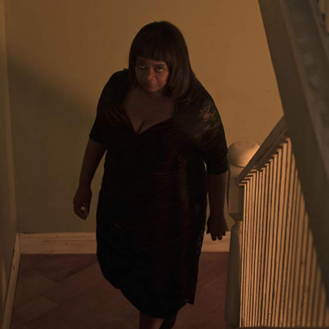Everyone has their own type of vice. Helene’s is her camera. Although she’s able to enthral people with her stunning photography, it’s an interest of hers that she chooses to take up a large portion of her life. The high she gets off of the perfect picture is that of a drug.
Like a drug would do, Helene’s talent keeps her in her own world while others are kept out. Her daughter, Anna, has always recognized that she’s not a high priority in her Mother’s life. She watches Helene sleep her days away after late-night parties and exhibitions, and feels cross but frustratingly numb to it all.
With Anna’s case in Looking is the Original Sin, after trying every trick in the book to coordinate her way into her Mother’s life, she takes deliberate steps to walk in Helene’s shoes in order to establish some sort of connection.
Partly inspired by the life of artist Diane Arbus, Maria Del Mar (who plays Helene) and Katie Boland (who plays Anna) take a challenging dynamic written and directed by Gail Harvey and create outstanding results. Both actresses are able to stand their own ground and take movie goers through their own emotional journey.
Both characters have their own discrepancies – to which are easy to believe – and the struggle between who’s the parent in a situation always makes for compelling role reversals.
Harvey and Del Mar’s representation of a dedicated yet troubled artist is also handled very well and giving viewers the freedom to think what they want. A black-and-white video diary recording Helene is spread throughout the film, offering her personal thoughts. It’s vulnerable, and we see inside Helene’s soul, but Harvey doesn’t leave any hints of semi-pretentious behaviour out of the picture. These characteristics are very apparent during Helene’s self-reflection getaway.
Helene is very protective of the world she has built around her art, and other supporting characters see this as well. Kent Staines plays Brent, a close friend of Helene’s who extends his hand out only to be turned down frequently. Staines brings an energy to the film that’s comforting. It’s fun to watch him interact with other people in the film.
However, remembering the character of Brent starts to bring back the main qualm I have about Looking is the Original Sin’s screenplay.
It feels as if a lot of key motivations jump the gun and the outcomes are a bit too pat. They aren’t fully fleshed out before the character carries through with their choices. They’re rushed for the sake of moving the story forward.
With Brent, he may bring his own life to the movie, but his intentions are fuzzy at best. His need to keep Anna away from Helene could exist because he’s trying to protect Helene’s artistic integrity, but that teeters between being coherent information and a big “what if?”.
With that, even some of Anna’s motivations during the latter part of Looking is the Original Sin are a bit flimsy. A scene between her and one of her Mom’s old flings feels oddly out of character for Anna and overall preposterous when compared to everything Harvey is getting right.
Looking is the Original Sin, however, is fascinating. Even during its missteps, Harvey’s film is very interesting. It’s a notable indie where everything leads up to one heck of an ending that seriously moved me.




Leave a comment